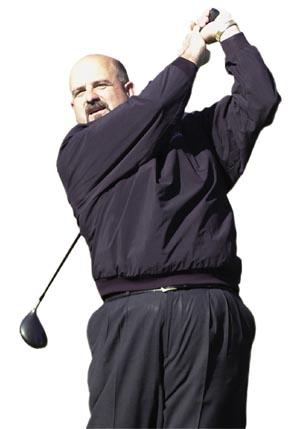Many players want to take a long backswing so they can really
wind up to hit the ball hard and far. The truth, though, is a long
backswing often causes a wide array of problems
I often say that golf is a game of opposites. Many players want to take a long backswing so they can really wind up to hit the ball hard and far. The truth, though, is a long backswing often causes a wide array of problems, such as miss-hits and shorter drives.
A long backswing usually causes your left arm to bend, resulting in no torque to your backswing. If your arm is straight, your back muscles will wind up, much like a top, and when released your swing will generate a lot of club speed. This doesn’t happen with bent arms.
A long backswing also results in your clubhead dipping down over your front shoulder, which causes a “flying” right elbow. This makes it very difficult to return your club to the proper position at impact.
There is even the possibility that a long backswing will cause a reverse weight shift. With the club dipping over the left shoulder, your weight goes to that direction first, which is the opposite of what it should do.
There aren’t many of us who can swing a club like John Daly, so keep that left arm straight and your elbows squeezed together on the back swing. The length of the swing isn’t as important as the control of it.










